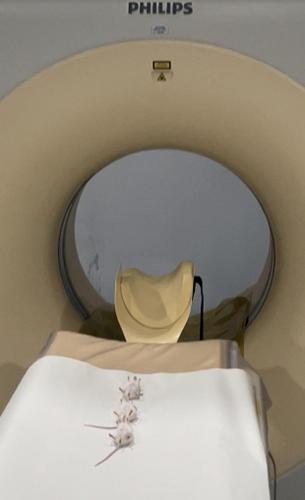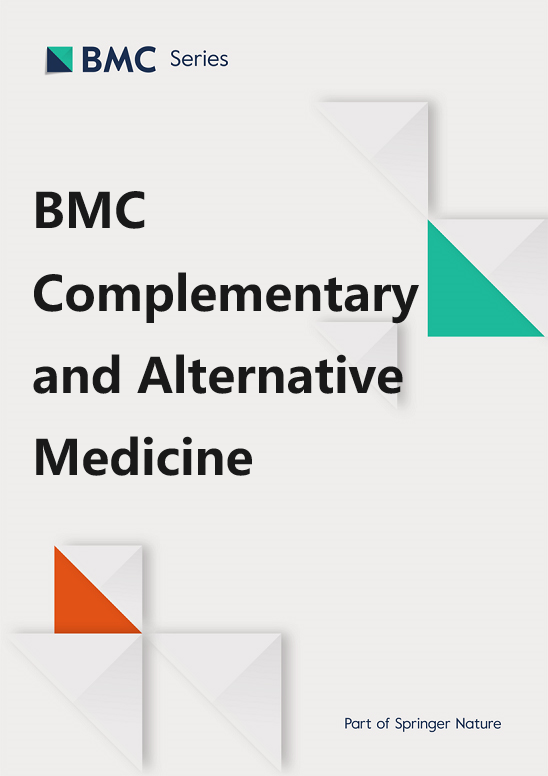姜黄素纳米乳剂对 BALB/c 小鼠囊性棘球蚴病的治疗效果:计算机断层扫描 (CT) 和组织病理学研究评估
IF 3.4
2区 医学
Q1 Medicine
引用次数: 0
摘要
本研究旨在确定姜黄素纳米乳剂(CUR-NE)对感染严格意义上的原小鼠棘球蚴病的疗效。42 只近交系 BALB/c 小鼠被分为 7 组,每组 6 只。六组小鼠腹腔内接种 1500 个有活力的颗粒棘球蚴原鳞片,随访六个月后作为感染组。感染组被命名为CEI1至CEI6。第 7 组未接种,命名为囊性棘球蚴病非感染组(CENI7)。CEI1 和 CEI2 组分别接受 40 毫克/千克/天和 20 毫克/千克/天的姜黄素纳米乳剂(CUR-NE)。CEI3 组接受不含姜黄素的纳米乳剂(NE-no CUR),CEI4 组接受姜黄素悬浮剂(CUR-S),剂量为 40 毫克/千克/天,CEI5 组接受阿苯达唑,剂量为 150 毫克/千克/天,CEI6 组接受无菌磷酸盐缓冲盐水(PBS)。CENI7 组接受 CUR-NE 40 毫克/千克/天。各组均在原虫接种后六个月开始用药,并持续60天。在治疗前以及治疗后的第 30 天和第 60 天,通过计算机断层扫描(CT)对每只小鼠的继发性 CE 囊肿面积进行评估。对治疗前后的 CT 扫描测量结果进行比较。小鼠在第 60 天安乐死后,解剖测量囊肿面积,并观察各组继发性囊肿的组织病理学变化。通过两种方法评估了 CUR-NE 对感染组的疗效:CT 扫描和尸检囊肿测量。CT 扫描显示了三组感染小鼠(CEI1、CEI2 和 CEI4)的隔膜钙化情况。通过 CT 扫描测量,CUR-NE 40 毫克/千克/天(CEI1 组)的疗效为 24.6 ± 26.89%;通过自体囊肿测量,CUR-NE 40 毫克/千克/天(CEI2 组)的疗效为 55.16 ± 32.37%。组织病理学证实了 CUR-NE 40 毫克/千克/天(CEI1 组)对继发性 CE 囊肿壁层的广泛破坏作用。本研究表明,CUR-NE(40 毫克/千克/天)对 BALB/c 小鼠的继发性 CE 囊肿具有显著的治疗效果。CT 扫描显示多个囊肿有明显的隔层钙化,组织病理学观察到对 CE 囊肿的破坏作用,这两个关键因素表明姜黄素纳米乳剂可能是治疗囊性棘球蚴病的一种潜在方法。本文章由计算机程序翻译,如有差异,请以英文原文为准。

Therapeutic effect of curcumin nanoemulsion on cystic echinococcosis in BALB/c mice: a computerized tomography (CT) scan and histopathologic study evaluation
This study aimed to determine the therapeutic efficacy of curcumin nanoemulsion (CUR-NE) in mice infected with Echinococcus granulosus sensu stricto protoscoleces. Forty-two inbred BALB/c mice were divided into seven groups of six animals each. Six groups were inoculated intra-peritoneally with 1500 viable E. granulosus protoscoleces, followed for six months and used as infected groups. The infected groups were named as: CEI1 to CEI6 accordingly. The 7th group was not inoculated and was named cystic echinococcosis noninfected group (CENI7). CEI1 and CEI2 groups received 40 mg/kg/day and 20 mg/kg/day curcumin nanoemulsion (CUR-NE), respectively. CEI3 received nanoemulsion without curcumin (NE-no CUR), CEI4 received curcumin suspension (CUR-S) 40 mg/kg/day, CEI5 received albendazole 150 mg/kg/day and CEI6 received sterile phosphate-buffered saline (PBS). CENI7 group received CUR-NE 40 mg/kg/day. Drugs administration was started after six months post-inoculations of protoscoleces and continued for 60 days in all groups. The secondary CE cyst area was evaluated by computed tomography (CT) scan for each mouse before treatment and on the days 30 and 60 post-treatment. The CT scan measurement results were compared before and after treatment. After the euthanasia of the mice on the 60th day, the cyst area was also measured after autopsy and, the histopathological changes of the secondary cysts for each group were observed. The therapeutic efficacy of CUR-NE in infected groups was evaluated by two methods: CT scan and autopsied cyst measurements. Septal calcification in three groups of infected mice (CEI1, CEI2, and CEI4) was revealed by CT scan. The therapeutic efficacy of CUR-NE 40 mg/kg/day (CEI1 group) was 24.6 ± 26.89% by CT scan measurement and 55.16 ± 32.37% by autopsied cysts measurements. The extensive destructive effects of CUR-NE 40 mg/kg/day (CEI1 group) on the wall layers of secondary CE cysts were confirmed by histopathology. The current study demonstrated a significant therapeutic effect of CUR-NE (40 mg/kg/day) on secondary CE cysts in BALB/c mice. An apparent septal calcification of several cysts revealed by CT scan and the destructive effect on CE cysts observed in histopathology are two critical key factors that suggest curcumin nanoemulsion could be a potential treatment for cystic echinococcosis.
求助全文
通过发布文献求助,成功后即可免费获取论文全文。
去求助
来源期刊

BMC Complementary and Alternative Medicine
INTEGRATIVE & COMPLEMENTARY MEDICINE-
CiteScore
7.00
自引率
0.00%
发文量
0
审稿时长
3 months
期刊介绍:
BMC Complementary Medicine and Therapies is an open access journal publishing original peer-reviewed research articles on interventions and resources that complement or replace conventional therapies, with a specific emphasis on research that explores the biological mechanisms of action, as well as their efficacy, safety, costs, patterns of use and/or implementation.
 求助内容:
求助内容: 应助结果提醒方式:
应助结果提醒方式:


